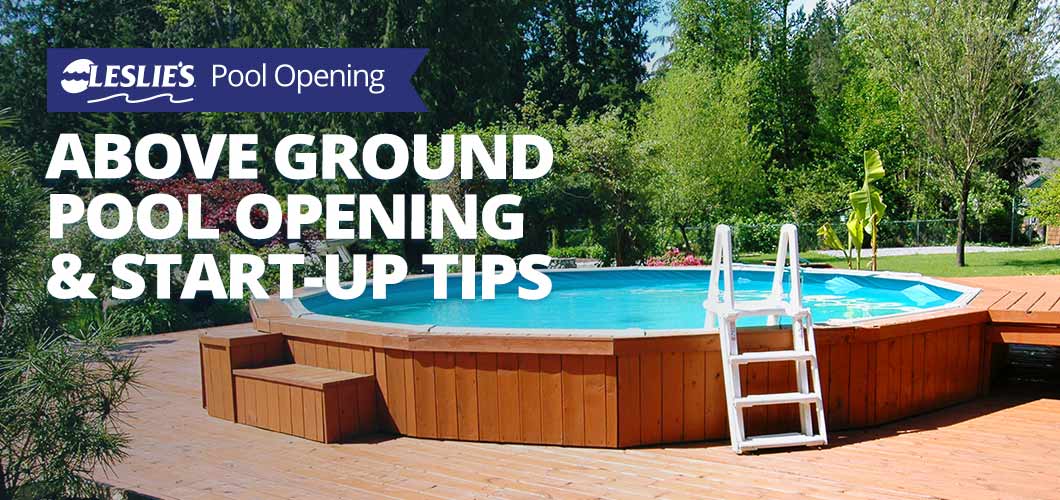
Above Ground Pool Opening & Start-Up Tips
Spring has sprung! As the water temperature heats up, your above ground pool needs filtration and chemicals. If you already have an above ground pool in your backyard, we recommend opening the pool before the water temperature reaches 65°F. On the other hand, if you’re looking to purchase a new above ground pool, you’ll want to get it up and running right after installation. But how do you get an above ground pool ready for swimming?
Whether this is your first DIY pool opening or start-up, or whether you just want a refresher on how to open an above ground pool on your own, this post is for you! We’ll walk you through the 6 basic steps for getting pool water clean, clear, and sanitized for swimming. Let’s get started! If this is a new pool installation or a fresh start-up, you can skip ahead to step 2.
1. Remove the Pool Cover
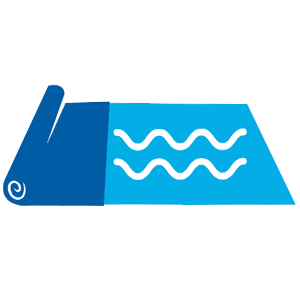
The first step to open your above ground pool is to remove the winter cover. If the water level is very low, adding water under the cover can make cover removal easier. Use a leaf rake to scoop off leaves and twigs. You can use a pool cover pump to remove any standing water on top of the cover.
Once the water is pumped off and debris is (gently) removed, release the cover cable and cover clips, which were used to secure the cover. With a helper on the other side of the pool, fold the cover in half, then slowly and carefully pull it over the edge of the pool.
Spread the cover out in the driveway or other large area for cleaning and drying. Avoid grassy areas, which can turn brown if covered for too long on a hot, sunny day. Once dry, fold the cover accordion style (fan fold) to make it easier to spread over the pool next fall.
DIY TIP: Before folding and storing the winter pool cover, sprinkle both sides with talcum powder or Leslie's Alkalinity Up. This will help prevent mold and mildew growth while in storage.
2. Assemble Filtration System and Pool Plumbing

Next in the pool opening process, reattach the filter system hoses that connect to the above ground pool skimmer and return(s), and replace the drain plugs on the pump and filter. Install the return eyeball fittings, skimmer basket, thermometer, and pool ladder or step system. If there are any, remove all winterizing plugs from the skimmer and/or wall returns.
For threaded plastic plugs on the pump and filter, and for the filter pressure gauge, replace the old Teflon tape with new, wrapping three times in a clockwise direction for a tight seal. For plugs with a gasket or o-ring, apply a Teflon-based pool lube to protect the rubber and improve the seal.
Also apply pool lube to the pump lid o-ring, and to any other sealing gaskets used in valves or unions. NEVER use a petroleum-based lubricant like Vaseline™ or WD-40™, as these will damage the soft rubber used in o-rings and gaskets.
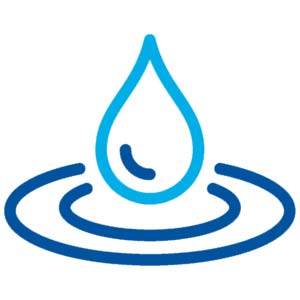
3. Fill the Pool
Once the filtration system is put back together, you can fill your above ground pool up to mid-skimmer level to continue the opening or start-up process. As the pool fills and the filter system is flooded with water, look for any water leaks in the filter hoses, valves, pump, and filter equipment. Take a slow walk around to look for any wet areas outside the pool, especially if this is a new install or if you found your pool water level very low under the winter cover.
4. Start Up Your Pool System
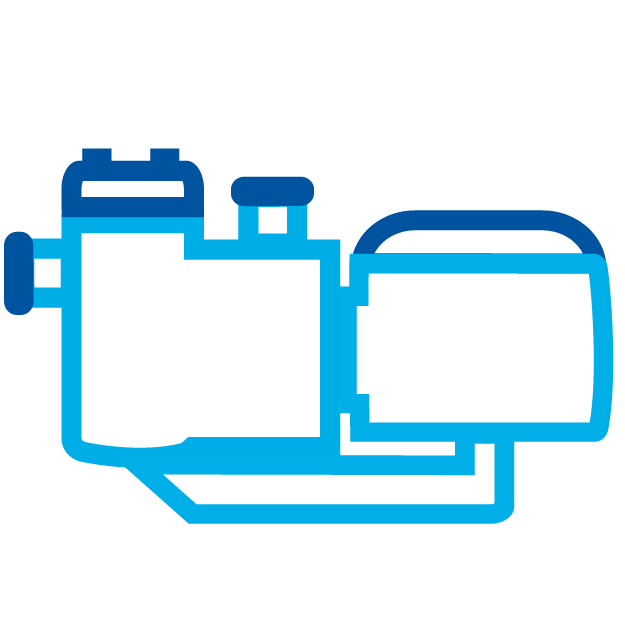
Now comes the time to fire up the pump. First, check that all valves are open. For sand and DE filters, place the multiport valve into the “filter” position. Open the air bleeder on top of the filter to relieve air pressure, then flip the switch. It’s time to start up your above ground pool systems so you can finish opening the pool!
Keep a close eye on the filter pressure gauge. If it should spike to 30 psi or more, shut down the system and re-check that all valves and wall returns are open and unplugged. Verify good water flow into the pool, and make note of the starting pressure on your clean pool filter.
If the pump fails to start, check that the power supply is good and the GFCI outlet is not tripped. Next, check that the shaft and impeller spin freely. Often, a thin layer of rust can build up inside the motor, which can be broken up by manually turning the shaft back and forth.
DIY TIP: Having trouble with your above ground pool pump, filter, or pool cleaner? Just bring it to your local Leslie’s store. Our knowledgeable pool service technicians can quickly troubleshoot and repair the problem for free. The only thing you’ll pay for are the parts needed for the repair.
5. Clean the Pool
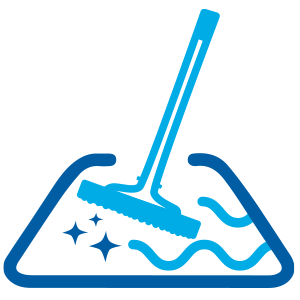
If this is a brand new pool with fresh water fill, you can skip this step for now. On the other hand, if this is an existing above ground pool you're re-opening, we can assume that you probably already know how to clean a pool. But did you know that the best order for cleaning is to skim the pool, then vacuum, then brush? It’s a much more efficient use of your time to clean the pool in this order. For large amounts of debris on the floor, use a leaf rake or a leaf bagger.
While opening the pool, you may notice some staining on the vinyl liner. This is quite common after a long winter of stagnation — don’t worry about it for now. Many of these stains will disappear on their own once the water is balanced and chlorinated.
It is important to remove debris from the pool before balancing the chemistry and shocking the pool, as heavy leaf debris and algae can negatively affect both.
6. Adjust Pool Chemistry
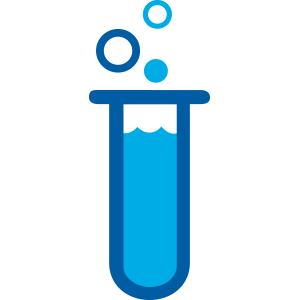
Before shocking your above ground pool or using a Leslies’s Pool Opening Kit, it's important to test and adjust the water levels for pH, Total Alkalinity, Calcium Hardness, and Cyanuric Acid (chlorine stabilizer).
Test your pool water with an at-home test kit that can give results for all four tests above. You can also bring a water sample to any Leslie’s store for a free 10-point AccuBlue® water test, which provides you with a precise water analysis and customized water treatment instructions to take home.
After balancing the water, it’s time to shock the pool. Remember to keep the pump running on high speed when adding any chemical to the pool, and always refer to product label instructions for application and dosage instructions. Improper application can damage your above ground pool's vinyl liner.
DIY TIP: Leslie’s Pool Opening Kits come with all the ingredients you’ll need to open your pool in the spring. All kits come with Chlor Brite shock, Ultra Bright Advanced clarifier, Spring Stain Away, Opening Algaecide, and more. Cut out the guesswork with our carefully pre-measured kits for pools up to 35,000 gallons in size.
Saltwater pool owners should also test for salt content, and may need to add a specific amount of pool salt to match the salt system manufacturer’s recommended saline level. For more information on pool water chemistry, shock, and water testing, check out our library of informational water treatment articles.
Next Steps After Opening Your Above Ground Pool

In the days immediately after opening the pool, the filter may need cleaning or backwashing, so keep a close eye on the pressure gauge. Once the pressure gets 10 psi higher than the clean pressure reading, it’s time to clean the filter. Also monitor the pool water level closely to ensure the pump stays primed and to rule out pool leaks. If the water was particularly dirty at opening time, your pool may need a few more cleanings before it’s ready for prime time use. But if you have balanced water chemistry, sanitizer levels in range, and clear water, there's no need to wait. Start swimming!
To keep your pool in top shape throughout the summer, it’s important to keep up with proper water balance, regular cleaning and routine maintenance. Browse through our Expert Advice and Resource Center articles for tips and tricks on keeping your pool swim-ready. You can also check out our above ground pool maintenance checklist for more detailed instructions on above ground pools.
Still have questions? Call or stop by your local Leslie’s to speak with one of our knowledgeable pool professionals. Don’t forget to bring along a water sample for a free AccuBlue® test, which precisely measures 10 different aspects of water chemistry in your pool.